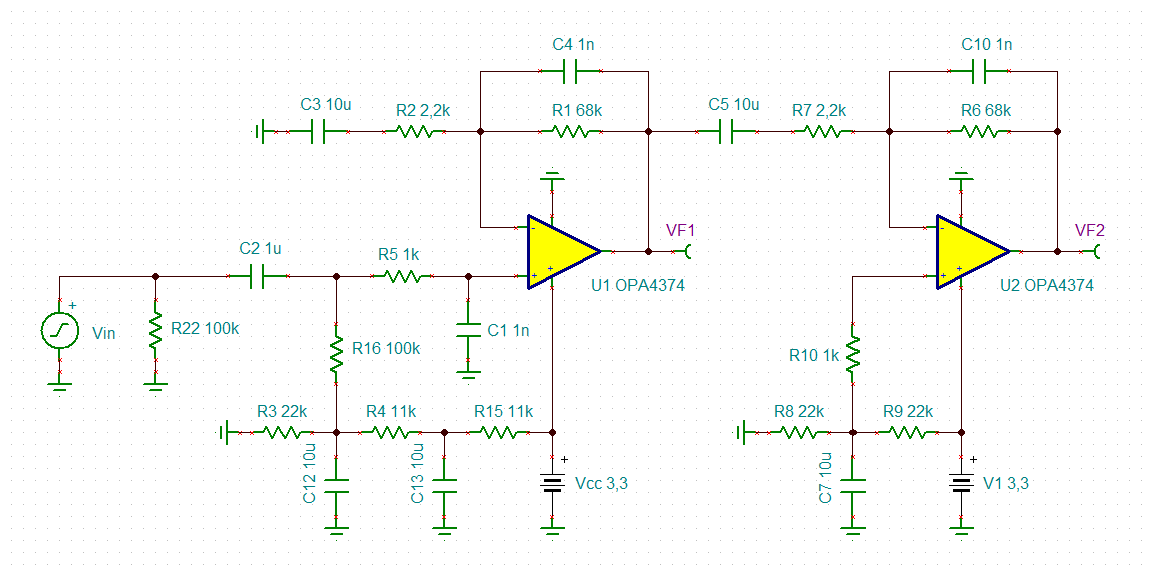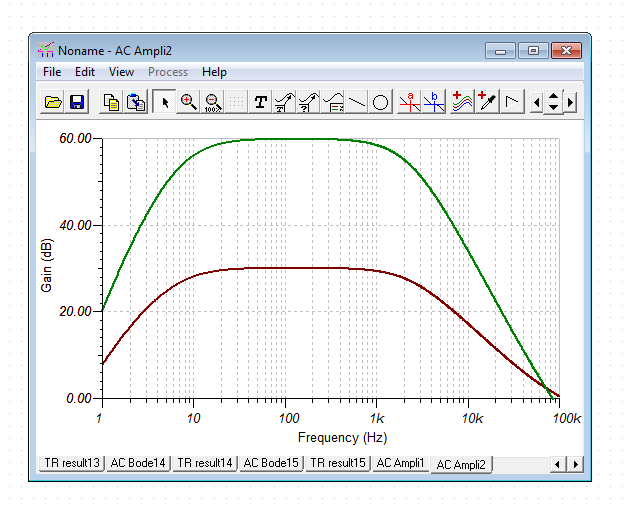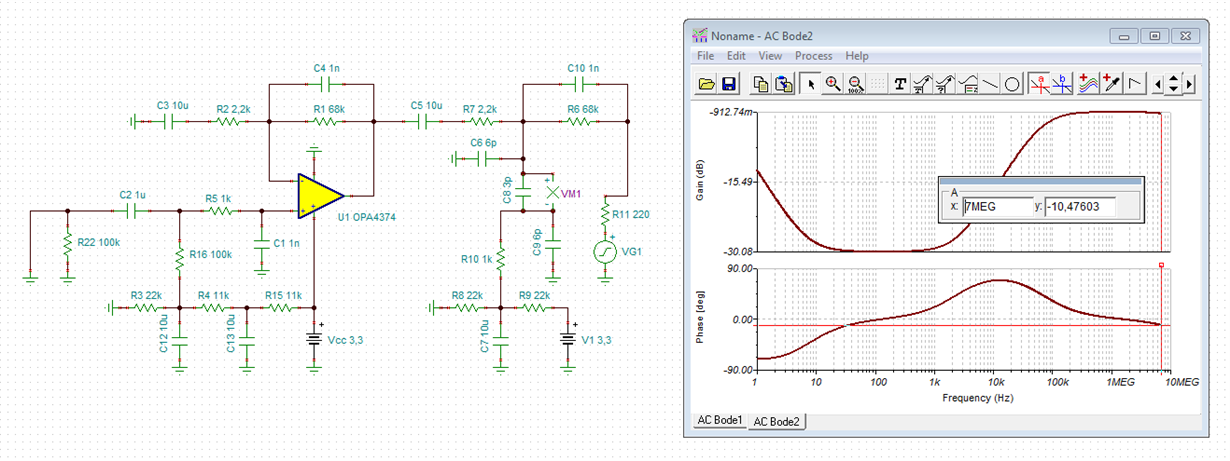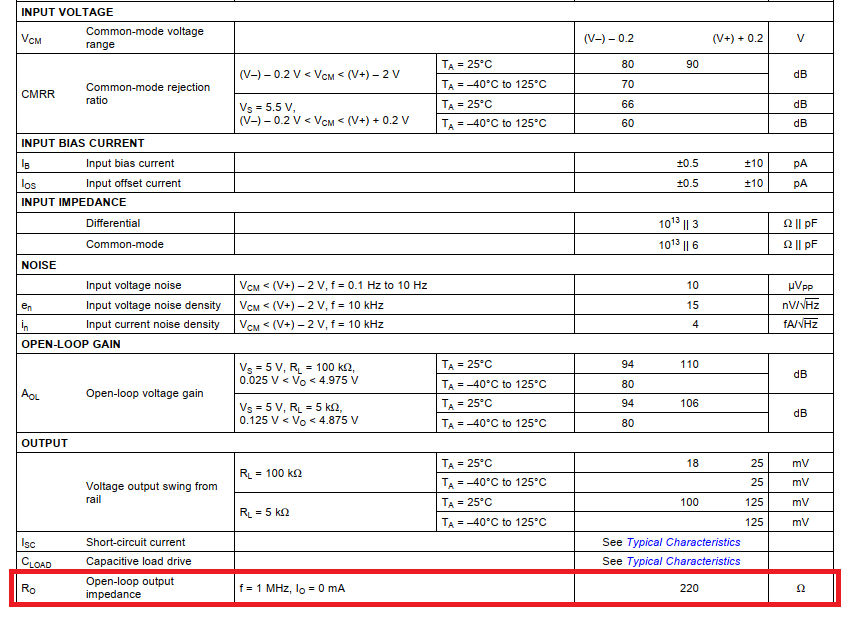Other Parts Discussed in Thread: TEST2, TINA-TI
Hi team,
My customer is designing a signal conditioning circuit for sensor signal. They want to use OPA4374 to amplify the input signal, and have this two schematic.
Could you please help to check if these two circuit work? Or do you have a better solution for this application?
Sensor's output: 100-250Hz, 5mV(sine wave); AD range 0-3.3V, 12bit, 250kSPS.
By the way, the sensor is single power supply, so the output should only have the positive voltage.
Thanks!
James







